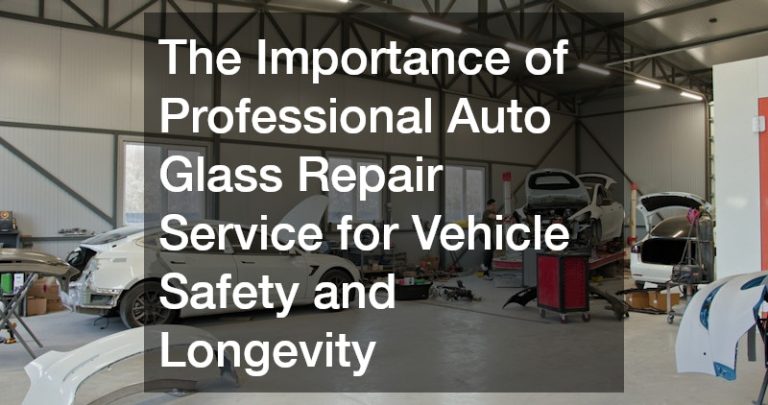Car maintenance is akin to taking care of one’s health; it requires regular attention, knowledge, and a proactive approach. The road to longevity for your vehicle is paved with facts, insights, and preventive measures. Knowing 10 helpful maintenance facts ensures that your vehicle stays in peak form, aiding performance and safety. This article dives deep into essential facets of vehicle care, emphasizing the importance of informed maintenance decisions to enhance the lifespan of your vehicle. From understanding the ins and outs of wheel alignment to ensuring tire safety, these insights provide a robust foundation for every vehicle owner. Let’s explore each of these topics in more detail.
Why Alignment Matters
When we discuss car maintenance facts, one of the primary concerns is ensuring the wheel alignment is correctly adjusted. Proper wheel alignment means the wheels are set at the appropriate angles as specified by the manufacturer, ensuring effective contact with the road. Misalignment can lead to uneven tire wear, which negatively impacts handling and safety.
Diving deeper into the specifics, signs of misaligned wheels include the vehicle pulling to one side, uneven tire wear, or a crooked steering wheel. Regular checks and realignment services are a must, particularly after incidents like hitting a pothole or a curb. Ongoing neglect can escalate the need for frequent tire replacements, which is much costlier in the long run.
To maintain optimal performance and prolong the lifespan of your tires, regular wheel alignment should not be overlooked. Checking alignment at every oil change or at least every 10,000 miles is a good rule of thumb. This preventive measure not only saves money but also ensures your vehicle’s safety, contributing to a smoother ride. Wheel alignment is an integral component of understanding car maintenance facts, providing peace of mind through preventive maintenance.
Spotting Transmission Issues

Among the lesser-discussed car maintenance facts is the critical nature of understanding transmission issues. The transmission is responsible for distributing the engine’s power to the wheels, enabling the vehicle to move. Any irregularities must be addressed promptly to prevent more complex problems.
Transmission issues may manifest as slipping gears, strange noises, or delays in movement when shifting. Early detection is crucial; hence, keeping an eye out for these symptoms can save you from a costly transmission repair. Regular checks of the transmission fluid’s color and levels also contribute significantly to the transmission’s health.
A healthy transmission ensures seamless power flow and efficiency. Scheduling regular maintenance checks, typically every 30,000 miles, can prevent breakdowns and extend the life of your transmission. Informed decisions in terms of maintenance, particularly when it comes to transmission repair, are essential elements of car maintenance facts that can ultimately safeguard your investment.
Choosing a Trustworthy Mechanic
A cornerstone of car maintenance facts is the importance of choosing an auto mechanic you can trust. A reliable mechanic is like a trusted advisor for your vehicle’s health. They offer accurate diagnostics, quality repairs, and honest advice about your car’s condition. Trustworthy mechanics build relationships based on transparency and fairness.
When choosing an auto mechanic, it’s crucial to look out for certifications, years of experience, and customer reviews. Scrutinizing a mechanic’s reputation through word of mouth and online platforms ensures reliability and competence. An adept mechanic doesn’t just fix issues; they provide preventive insights to avoid potential pitfalls.
Entrusting your vehicle with a credible professional not only assures sustained vehicle performance but also contributes to overall peace of mind. Regular consultation with a reputable auto mechanic is an indispensable part of maintaining a vehicle. By embedding this into your regular vehicle routine, you follow car maintenance facts that support a longer, more efficient vehicle lifespan.
Brake Warning Signs

One of the critical car maintenance facts involves understanding the warning signs of failing brakes. The brake system is fundamental to the safety of your vehicle. As such, any anomaly in its performance calls for immediate inspection and brake repair service.
Common indicators such as squeaking noises, a spongy brake pedal, or the car pulling to one side while braking are red flags that should not be ignored. These could indicate the need for new brake pads, bleeding of the hydraulic system, or rotor issues. Regular brake inspections can preempt these situations, maintaining both the safety and performance of your vehicle.
Staying proactive with brake maintenance not only eliminates the inconvenience of unexpected malfunctions but is also a crucial safety measure. Regular service intervals based on the manufacturer’s guidelines ensure that the braking system operates efficiently, illustrating a fundamental aspect of car maintenance facts that prioritize your well-being.
Keeping Your Car Clean
While often undervalued, keeping your car clean is an integral part of maintaining its aesthetics and functionality. Car detailing extends beyond mere washing; it encompasses a comprehensive cleanup of both the exterior and interior, preserving the vehicle’s value over time.
Regular car detailing involves vacuuming, polishing, waxing, and treating every surface with care. This protects against pollutants, UV damage, and everyday wear and tear that could depreciate your car. A clean vehicle not only looks better but can actually enhance the owner’s driving experience.
Implementing a routine car detailing schedule ensures that your vehicle remains in pristine condition. It exemplifies the essence of car maintenance facts, which prioritize both the performance and appearance of your vehicle. Cleanliness is indicative of a well-maintained car, contributing to both its longevity and resale value.
Fixing Accident Damage

Accidents, though unfortunate, are often an inevitable part of driving. One of the key car maintenance facts is understanding the necessity of prompt repair of any accident damage at a reputable auto collision center. Addressing damage not only restores the vehicle’s appearance but also ensures its safety and functionality. Left unchecked, even seemingly minor accidents can cause underlying issues that might compromise the vehicle’s performance and safety.
Repairing accident damage can involve fixing dents, realigning the chassis, or more comprehensive structural corrections. Selecting an experienced auto collision center ensures quality repairs using the latest technologies and materials. Additionally, addressing even minor damages promptly prevents them from escalating into more serious issues, which could be much more costly and complicated to fix later on.
By prioritizing speed and quality in repairs, you maintain the structural integrity of your car. This vigilance exemplifies a core car maintenance fact: that timely intervention protects the vehicle’s value and ensures it remains roadworthy. It’s a proactive step that reflects a commitment to both safety and appearance. Over time, investing in proper repairs can enhance your car’s longevity, reduce the likelihood of future problems, and give you peace of mind on the road.
Refreshing Your Car’s Paint
A vibrant paint job isn’t just about aesthetics; it’s also indicative of the car’s overall condition. One of the essential car maintenance facts is the impact of regular upkeep, including auto painting, on preserving the car’s bodywork against rust and corrosion. A fresh coat of paint not only rejuvenates the vehicle’s appearance but also plays a crucial role in maintaining its value over time.
Various environmental factors, such as sun exposure and pollutants, can fade and degrade your car’s paint over time. Refreshing the paint involves more than just applying a new coat; it’s about thorough preparation, ensuring durability and longevity. This process includes sanding, priming, and using high-quality paint to withstand weather conditions. Investing in proper paint maintenance helps prevent minor scratches and chips from evolving into significant damage, reducing repair costs in the long run. This protects the car’s body while enhancing its overall appeal.
Regular auto painting not only beautifies but also acts as a protective coat against potential damage. By maintaining your car’s paintwork, you safeguard its body structure, aligning with car maintenance facts that consider both aesthetic and functional aspects. A well-painted car is a reflection of meticulous maintenance and care, ensuring that it remains in top condition for years to come.
Rim Damage Solutions

Rim damage is a common yet overlooked issue that can lead to long-term problems if not addressed. Car maintenance facts emphasize the importance of car wheel repair in maintaining the overall well-being of the vehicle. Damaged rims can impair tire pressure and affect alignment, compromising the vehicle’s stability. Additionally, neglected rim damage can contribute to uneven tire wear, reducing the lifespan of your tires and increasing the risk of blowouts.
Common causes of rim damage include hitting potholes, curbs, or other road obstacles. Identifying and repairing rim damage promptly prevents more severe complications down the road. Reputable service providers can assess and repair or replace rims, restoring the vehicle’s balance and aesthetics. In some cases, specialized techniques like welding or refinishing may be required to fix minor cracks or corrosion, helping extend the longevity of the rims.
Regular inspections for rim damage and timely repairs contribute significantly to a vehicle’s safety and handling. By addressing these issues immediately, you ensure that the car remains stable and roadworthy, underscoring one of the essential car maintenance facts about proactive vehicle care. Keeping your rims in top condition enhances fuel efficiency, improves braking performance, and provides a smoother driving experience overall.
Pros & Cons of Used Tires
While used tires can be a cost-effective solution, it’s essential to weigh their pros and cons. Among car maintenance facts, understanding tire options plays a crucial role in vehicle safety and efficiency. Used tires, though cheaper, come with risks that new tire buyers don’t face.
The advantages include lower costs and potential savings, making them an attractive option for budget-conscious drivers. Additionally, purchasing used tires can be an environmentally friendly choice, as it helps reduce waste and promotes recycling efforts. However, the downside includes reduced tread life and potential safety hazards if they are not correctly chosen or inspected. Older tires may also have hidden structural damage or weakened rubber due to exposure to the elements. Buyers must conduct thorough checks to ensure the tires still have sufficient tread and are free from visible defects.
Understanding the implications of using used tires ensures informed decisions that align with car maintenance facts. Regular checks and informed purchases prevent potential risks, ensuring both cost-efficiency and safety remain at the forefront of decision-making. The key takeaway is that while used tires may provide savings, they must be chosen with caution to avoid safety concerns and unexpected expenses in the long run.
Ensuring Tire Safety
Tire safety is paramount in any discussion of car maintenance facts. Proper tire service, including regular rotations, alignments, and pressure checks, is essential for safety and performance. Tires are the vehicle’s direct contact with the road, influencing steering, braking, and overall stability. Worn or underinflated tires can lead to reduced traction, increasing the risk of accidents, particularly in adverse weather conditions.
Regular tire service ensures even wear and optimizes fuel efficiency. It involves checking tread depth, pressure, and overall tire condition. Neglecting these can lead to decreased performance, increased fuel consumption, and potential safety risks. Maintaining appropriate tire pressure and routine rotations are fundamental practices that prolong tire life. Additionally, keeping an eye out for uneven tread wear can signal alignment or suspension issues that need immediate attention.
Committing to regular tire service exemplifies a proactive approach to car maintenance, reflecting a key fact: that vigilance in tire care enhances road safety and vehicle efficiency. It’s a critical aspect of car care that directly influences every drive, showcasing the importance of regular maintenance in ensuring a safe driving experience. By prioritizing tire inspections and timely replacements, drivers can prevent unexpected blowouts and improve overall handling, leading to greater confidence behind the wheel.
The journey through these 10 helpful car maintenance facts underscores the importance of informed and proactive vehicle care. From the critical aspects of wheel alignment and brake care to the aesthetic attenuation of auto painting and detailing, every facet plays a vital role in maintaining your vehicle’s longevity and safety. These insights serve as a holistic framework, guiding car owners through the indispensable elements of effective maintenance.
By embracing these principles, car owners empower themselves with knowledge that translates into proactive care. Understanding these maintenance facts fosters an environment of safety, efficiency, and confidence on the road, allowing for a seamless and enjoyable driving experience. Regular maintenance and timely interventions reflect a commitment to not only preserving the vehicle’s value but also ensuring safety for all occupants.








